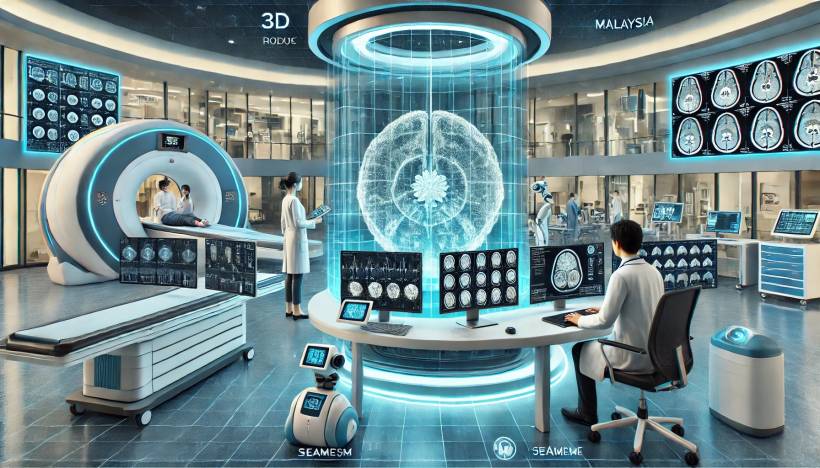Picture Archiving and Communication Systems, or PACS, have revolutionized the way medical images are stored, retrieved, and shared in hospitals worldwide, including those in Malaysia. By digitizing imaging data, PACS eliminates the need for traditional film-based methods, leading to faster diagnoses, improved patient care, and enhanced collaboration among healthcare professionals.
Understanding PACS
At its core, PACS is a medical imaging technology that provides economical storage and convenient access to images from multiple modalities. It allows healthcare providers to digitally transmit electronic images and reports, eliminating the need to manually file, retrieve, or transport film jackets. This digital approach not only streamlines workflows but also ensures that critical imaging information is readily available to authorized personnel, regardless of their location.
PACS in Malaysian Hospitals
Several leading hospitals in Malaysia have adopted PACS to enhance their radiology services. Here's a look at five prominent hospitals and the PACS systems they have implemented, along with the top imaging modalities used in each hospital.
1. Hospital Canselor Tuanku Muhriz UKM (HCTM, PPUKM)
- PACS System: Synapse by Fujifilm
- Top Modalities: MRI, CT, X-ray, Ultrasound, PET-CT
- Details: HCTM transitioned to the Synapse PACS system on January 1, 2023, replacing their previous Medweb system. This upgrade aligns with their commitment to providing high-quality, patient-oriented radiology services in a filmless environment.
2. Hospital Selayang
- PACS System: Total Hospital Information System (THIS)
- Top Modalities: Digital X-ray, Fluoroscopy, CT, MRI, Mammography
- Details: As Malaysia's first paperless hospital, Hospital Selayang implemented THIS in 1997, integrating various components, including PACS, to streamline hospital operations and patient care.
3. Hospital Putrajaya
- PACS System: Total Hospital Information System (THIS)
- Top Modalities: MRI, CT, Ultrasound, Digital X-ray
- Details: Following Hospital Selayang's lead, Hospital Putrajaya adopted THIS in 2000, embracing a comprehensive digital approach to hospital information management, including PACS functionalities.
4. Prince Court Medical Centre (PCMC)
- PACS System: GE Healthcare Centricity PACS
- Top Modalities: 3T MRI, 128-slice CT, PET-CT, Digital Mammography, Interventional Radiology
- Details: PCMC, one of Malaysia's top private hospitals, is renowned for its advanced imaging technology. The GE Centricity PACS system ensures seamless integration of radiology images across departments, allowing specialists to make rapid and accurate diagnoses.
5. Gleneagles Hospital Kuala Lumpur
- PACS System: Philips IntelliSpace PACS
- Top Modalities: 3T MRI, CT Angiography, PET-CT, Fluoroscopy, 4D Ultrasound
- Details: Gleneagles Kuala Lumpur offers cutting-edge diagnostic imaging with a strong focus on cardiology, oncology, and neurology. The PACS system facilitates efficient management of imaging data, enhancing patient treatment workflows.
6. Sunway Medical Centre
- PACS System: Agfa HealthCare Enterprise Imaging PACS
- Top Modalities: 3T MRI, Low-dose CT, Tomosynthesis Mammography, Interventional Radiology, Nuclear Medicine
- Details: Sunway Medical Centre is a leading private healthcare institution in Malaysia, integrating Agfa HealthCare's PACS for high-resolution imaging and rapid accessibility across its medical network.
Benefits of PACS Implementation
The integration of PACS in hospitals offers numerous advantages:
- Improved Efficiency: Digital storage and retrieval of images reduce the time clinicians spend accessing patient information, leading to faster diagnosis and treatment.
- Enhanced Collaboration: Authorized healthcare professionals can access images simultaneously from different locations, facilitating better consultation and collaborative decision-making.
- Cost Reduction: Eliminating physical film reduces costs associated with film processing, storage, and transportation.
- Space Optimization: Digital archives free up physical space previously occupied by film storage, allowing hospitals to utilize areas more effectively.
Challenges in PACS Implementation
Despite its benefits, implementing PACS comes with challenges:
- Financial Constraints: The initial investment for PACS infrastructure can be substantial, posing challenges for budget-constrained hospitals.
- Technical Issues: Ensuring compatibility with existing hospital information systems and maintaining data security require robust IT support.
- User Training: Healthcare professionals need adequate training to adapt to new digital workflows and fully leverage PACS capabilities.
Conclusion
The adoption of PACS in Malaysian hospitals signifies a pivotal shift towards digital healthcare, aiming to enhance patient care and operational efficiency. While challenges exist, the benefits of streamlined workflows, improved accessibility to imaging data, and cost savings make PACS an invaluable asset in modern medical practice.
